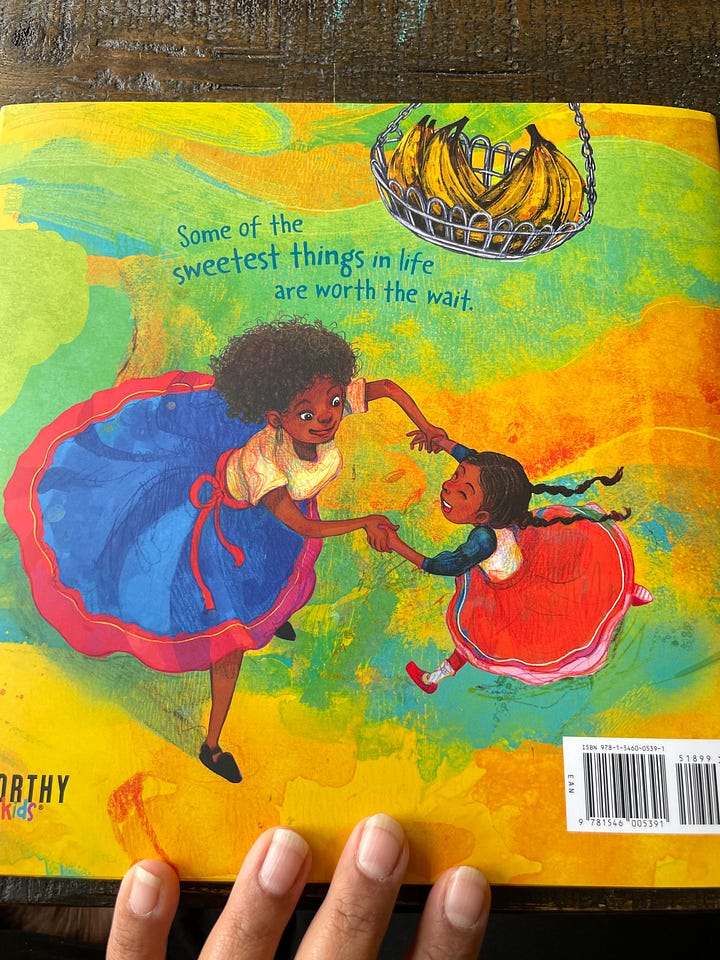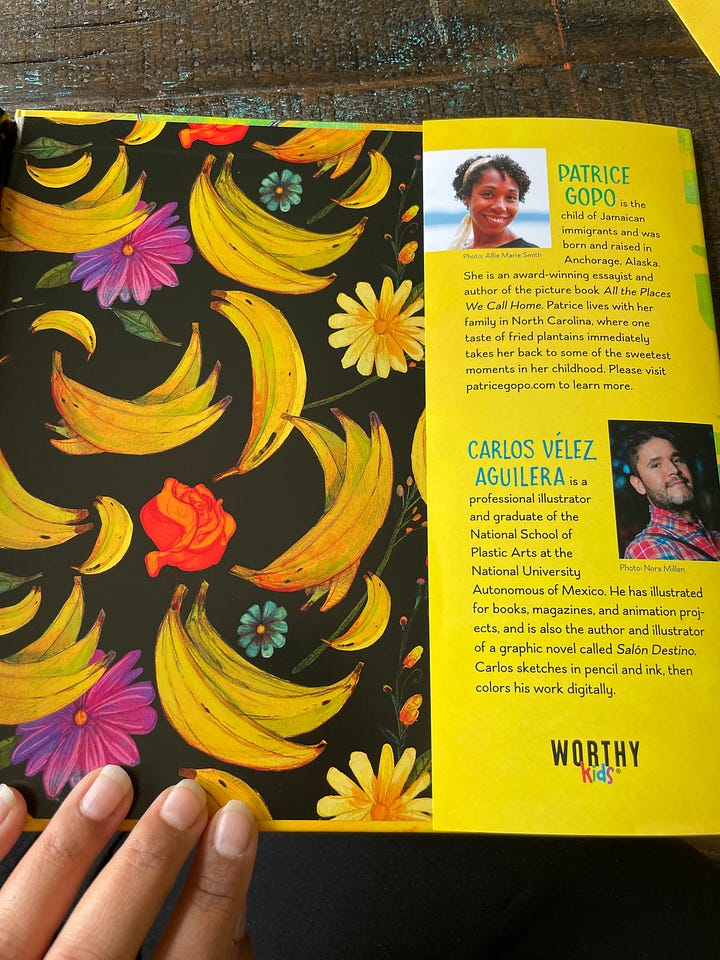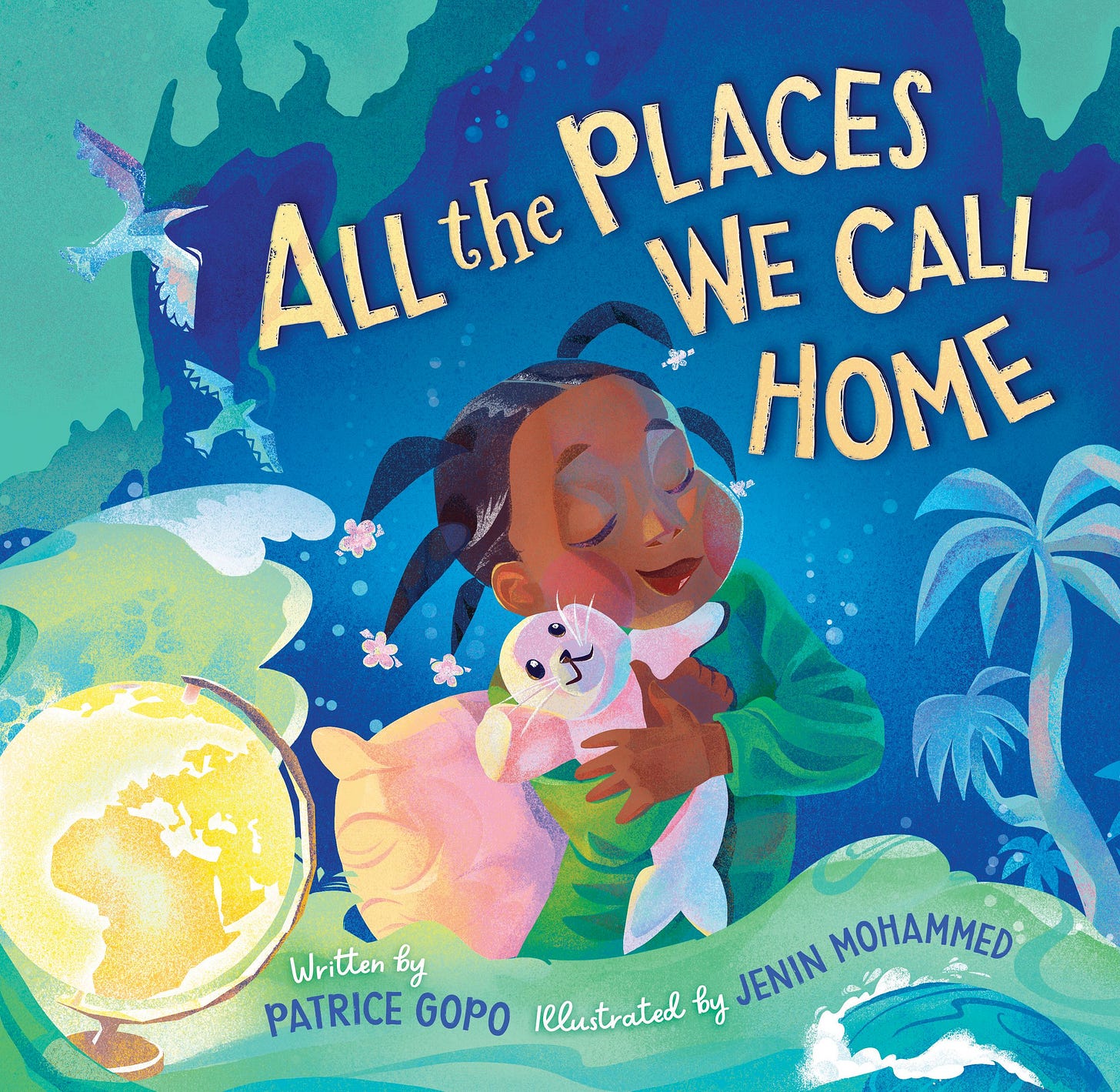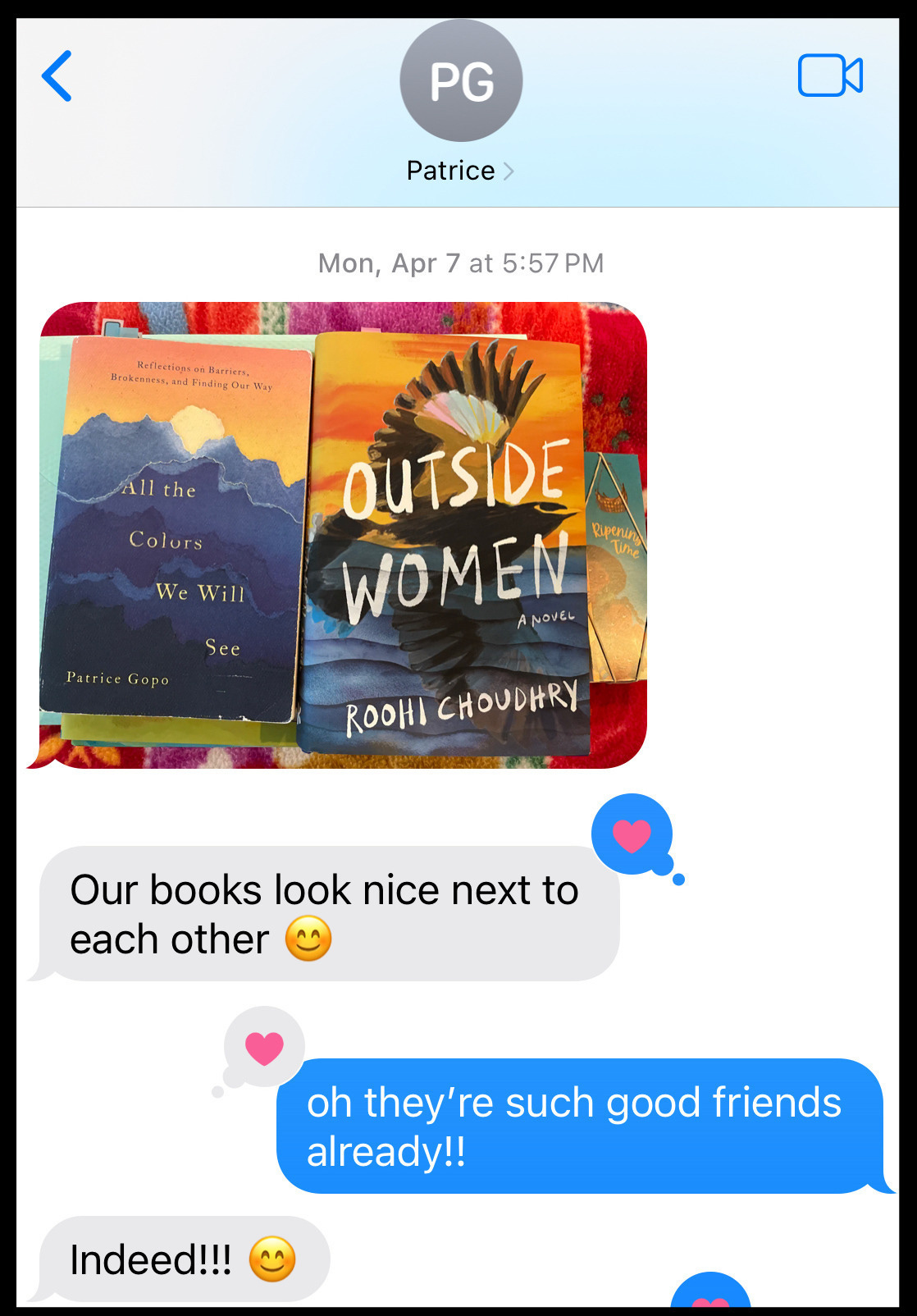We Are Each Charting Our Own Path
A Conversation with Author Patrice Gopo
At an event to celebrate Outside Women last week, the moderator asked me: This book took you a long time to write and publish — what kept you going?
Writers and readers have asked me some version of this question many times over the past few weeks. And I’ve always replied with — it’s you. It’s people. My community of artists, writers, activists, and readers gets me up on the hardest days.
Patrice Gopo is one of these treasured people. I shouldn’t play favorites but she’s up there! She’s an award-winning essayist and author of multiple essay collections and picture books, as well as editor of an upcoming anthology. Her gorgeous new picture book, Ripening Time, is out this week.




As I’ve shared in one of my previous posts, Patrice’s advice to try my hand at picture books got me out of a canyon-deep writing rut a few years ago. I love our conversations about the synchronocities between picture books and essays, forging community without losing our own cherished and often solitary creative practices, and also the nuts and bolts of nonfiction craft.
I always learn so much from our chats about our writing lives. It’s about time I stopped being greedy and shared some of her wisdom with others! So here we go with our very first Q&A at Being of Clay, Lover of Words, with the delightfully wise Patrice Gopo.
RC: We’ve talked often about how much we both love picture books. How does writing picture books inform your essay writing, and vice versa?
PG: Oh, I love this question because I’m a big believer that our writing influences our writing. I’m also a big believer that a story can exist in many forms. We can see the realization of those many forms if we pay attention to what the writing might say it wants to be.
My prime example of this is my initial journey into picture books. Back in 2019, I was rereading the essay “Before” in my first essay collection, All the Colors We Will See. That essay is about a moment when I was placing my daughter down for a nap in rural Zimbabwe, and I remembered a nap I had once taken as a small child in rural Jamaica. As I reread, this thought alighted me: “This could be a picture book.” That was the beginning of the essay telling me that it wanted to exist in another form. So, I set about discovering the art of crafting picture books. Eventually, that sliver of thought emerged as my debut picture book, All the Places We Call Home.
So, now, to officially answer your question: Yes, my essay writing absolutely feeds my picture book writing. At this point, many of the picture book manuscripts I have written have emerged from my already existing essays. These essays then nudge at me that they want to exist in another form.
This often happens because the act of writing essays invites me to pause and examine an experience, memory, or image from multiple angles and then create meaning on the page. Having done this work provides a beautiful entry point into thinking of that meaning in other ways through picture books. Ripening Time is a great example as it is firmly rooted in another essay in All the Colors We Will See called “Plucked and Planted.”
RC: What can those of us who write for adults learn about craft from picture books?
PG: Picture books push me to engage with the economy of language, much like I imagine poets do. Picture books are a compressed form, with word counts generally in the 500-ish range. To grow as a picture book writer, I’ve needed to lean into developing my concision muscles. Such concision muscles can be a gift to my essays as I’m often prone to overwrite.
In addition, writing picture books infuses my essay writing with new energy. Sometimes, when we stare at the same project over and over, we begin to feel static in our thoughts and stagnant in our motivation to create. Taking breaks from writing essays and working on a picture book reminds me afresh of the joy of creating.
(If anyone reading this has ever thought they wanted to write a picture book, I keep a list of resources to help with that journey toward the end of my Writing Resources page on my website.)
RC: I’ve always thought of you as a master community builder! You’re so generous with providing resources for emerging writers and making connections. How do you make time for this?
PG: Awww, thank you so much for these kind words. That means a lot coming from you because I also think of you as an amazing community builder. And I love that this question captures the real impact of encouraging others in their creative practice.
One idea I return to again and again is that there will be seasons for different types of community building. I remember years ago, when people emailed me for advice about the writing and publication journey, I would take time to answer those emails, provide resources, etc. I did this because I wanted to encourage another on the journey, and I also recalled the many generous people who had encouraged me in my writing practice.
However, over time, I realized I didn’t have the bandwidth to answer those emails how I might like. Answering those emails had an impact on the time I had for my own work. My solution was to create a page of writing resources on my website that I could easily share with people longing for information. This move freed up time for me but allowed me to continue sharing resources and streamlined my responses to requests for help.
RC: Beyond that excellent practical measure to streamline things, how do you generally feel about the tricky balance between community-building and writing? Does helping others ever hinder your own writing practice and how do you handle that?
PG: I think it’s important for me to recognize I cannot support and encourage everyone. That’s just not possible. To help determine where I engage, I regularly check in with myself and recognize what I have the capacity for and what I want to do. My capacity and interest are important considerations because I’ve found that if I don’t have the capacity AND interest, this is a recipe for me becoming bitter or annoyed.
I don’t want to be in that place, so I’ve created a boundary that requires both my capacity and interest in order to give my time, energy, or resources to encouraging and supporting others in their writing journeys. And I’ve found that when there is a beautiful intersection of my capacity and interest, such interactions can energize me for my work in the most remarkable ways.
Finally, I’ll also say that I recognize that my capacity and interest can shift over time. What may have been true a year ago may not be how I want to support others today. That’s perfectly okay. There are so many ways for me to engage with community building and making connections.
For me, it’s about figuring out what is the life-giving, energizing way during a particular season. And I actively work to avoid comparison with what others might be doing. We are each charting our own path!
RC: Let’s talk essay collections! A few years ago, I took your inspiring class on how to build a collection. I learned so much! Do you have a favorite nugget of wisdom to share with folks about how to approach a collection?
PG: Oh, thank you so much for those kind words about the class. That’s one of my favorite classes to teach. I think building and organizing essay collections can sometimes feel overwhelming, and I love offering people tools that can bring a calming—yet practical—presence to that process.
At the heart of building an essay collection is letting your creative self journey toward discovering the WHY of your collection. Why do all these essays want to live together within the covers of this book? Identifying that will help you determine what essays belong in the work, how you need to revise the work, what is missing from the work, etc. Identifying the WHY will serve as a beacon in your creative process.
RC: Are you teaching this class again anytime soon?
PG: Right now, I don’t have that class on my teaching calendar. However, please check my website where I keep an updated list of my classes, or sign up for my newsletter where I also share those details.
RC: This newsletter is about my love of words AND clay. Do you also have any kind of embodied practice outside of writing that you cherish? How does it feed your writing?
PG: It’s raining outside as I type these answers, and I’m taking a break now to go pull on my raincoat and rain boots and take a glorious walk through the downpour. My daily walks are an embodied practice outside of writing that I cherish. There is something about the swinging of my arms, the movement of my legs, the way my head will turn up toward the sky, the way my mind spins and flutters about that calls me home to myself.
But walks on rainy days are another level. Hearing the water plopping against the ground, the plunk it makes as it hits my raincoat, my face covered in drops as I glance toward the overcast sky. If an ordinary walk can call me home to myself, walking in the rain reminds me how very alive I am.
To be called home to myself. To be reminded of how alive I am. These acts plunge me into beautiful places of curiosity and discovery, of wonder and delight, all places I need in order to move images, memories, and ideas from my mind to the page.
Thank you so much, Roohi, for these wonderful questions! It’s been a joy to be here today.




Thank you so much for sharing this, Roohi!! You also are one of those treasured people. I love the text message screenshot :).